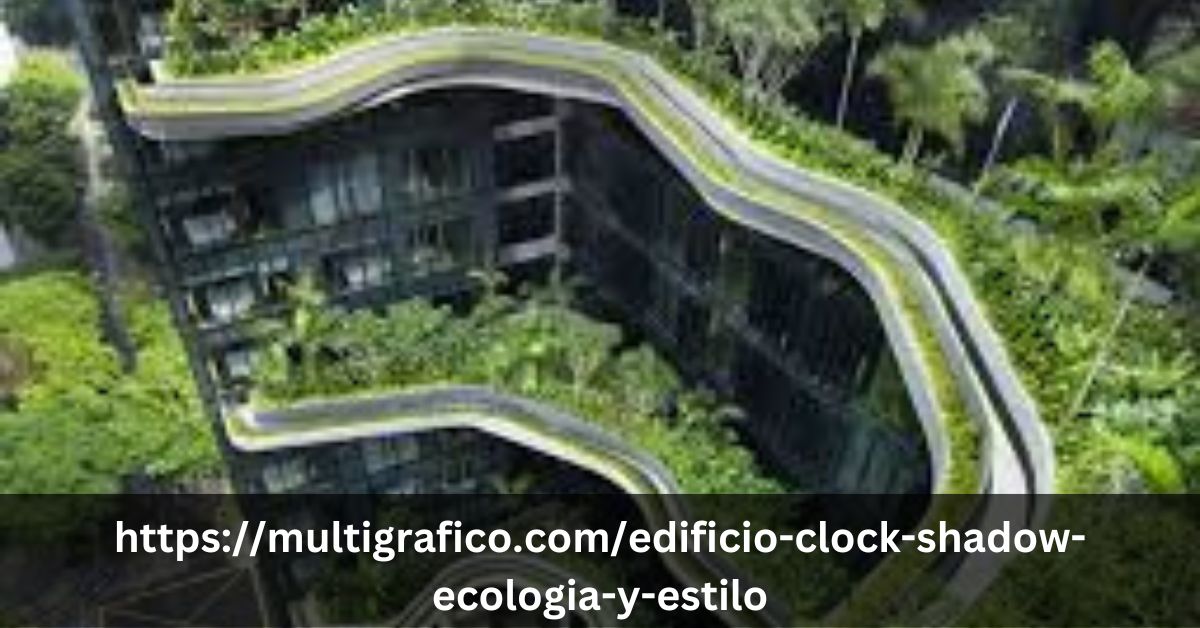https://multigrafico.com/edificio-clock-shadow-ecologia-y-estilo/ The blog has a section on architecture where I usually post highly aesthetic buildings, and I also love to keep up with advances in sustainable architecture. Recently, the awards for the most ecological buildings of 2013 were presented by the American Institute of Architects
Introduction to the Clock Shadow Building:
The Clock Shadow Building stands as a beacon of sustainable architecture, seamlessly blending ecological principles with modern aesthetics. Situated in Milwaukee, this commercial edifice serves not only as a testament to innovative design but also as a catalyst for environmental consciousness. Let’s delve into the intricacies of sustainable architecture, explore the defining features of the Clock Shadow Building, and analyze its profound impact on the community and the environment.
Sustainable Architecture and its Importance:
Sustainable architecture (https://multigrafico.com/edificio-clock-shadow-ecologia-y-estilo/), also known as green architecture or eco-friendly architecture, is an approach to design and construction that prioritizes environmental responsibility, energy efficiency, and resource conservation. It aims to minimize the negative impact of buildings on the environment while enhancing the health and well-being of occupants.

Design Features of the Clock Shadow Building:
The Clock Shadow Building exemplifies the principles of sustainable architecture through its innovative design features:
Emphasis on Energy Efficiency:
From its orientation to maximize natural light to its advanced insulation systems, the Clock Shadow Building prioritizes energy efficiency at every turn. By reducing the need for artificial lighting and heating, it significantly decreases its carbon footprint.
Utilization of Renewable Resources:
One of the hallmarks of sustainable architecture(https://multigrafico.com/edificio-clock-shadow-ecologia-y-estilo/) is the utilization of renewable resources such as solar and wind energy. The Clock Shadow Building integrates solar panels and other renewable energy sources to power its operations, further reducing reliance on non-renewable energy sources.
Integration of Green Spaces:
Incorporating green spaces within urban landscapes is a key tenet of sustainable architecture. The Clock Shadow Building features a green roof and a greenhouse, providing not only aesthetic appeal but also ecological benefits such as improved air quality and biodiversity.
Eco-friendly Materials Used in Construction:
The selection of eco-friendly materials is paramount in sustainable architecture. The Clock Shadow Building incorporates recycled wood, reclaimed metal, and other sustainable materials, minimizing its environmental impact and promoting a circular economy.
Renewable Energy Sources:
By harnessing the power of solar and wind energy, the Clock Shadow Building reduces its reliance on fossil fuels and contributes to a cleaner, greener future. The implementation of renewable energy sources not only lowers operating costs but also demonstrates a commitment to sustainability.
Water Conservation Measures:
Water conservation is a critical aspect of sustainable architecture(https://multigrafico.com/edificio-clock-shadow-ecologia-y-estilo/), particularly in urban areas facing water scarcity. The Clock Shadow Building employs innovative water recycling systems to minimize water consumption and reduce strain on local water resources.
Community Impact and Engagement:
Beyond its architectural prowess, the Clock Shadow Building serves as a catalyst for community engagement and sustainable living practices. Educational programs, community involvement initiatives, and partnerships with local organizations help raise awareness about environmental issues and inspire positive change.
Case Study: Clock Shadow Building’s Environmental Impact:
An analysis of the Clock Shadow Building’s environmental impact reveals impressive results. By reducing energy consumption, minimizing waste, and conserving water, it has significantly lowered its carbon emissions and set a new standard for sustainable building practices.
Challenges and Future Prospects:
While sustainable architecture offers immense potential for mitigating climate change and promoting environmental stewardship, it also presents challenges such as higher upfront costs and regulatory barriers. However, with continued innovation and collaboration, the future of eco-friendly building design looks promising.
Conclusion:
The Clock Shadow Building stands as a shining example of the transformative power of sustainable architecture(https://multigrafico.com/edificio-clock-shadow-ecologia-y-estilo/).
Through its innovative design features, utilization of renewable resources, and commitment to community engagement, it embodies the principles of environmental responsibility and sets a precedent for future eco-friendly developments.
As we strive towards a more sustainable future, buildings like the Clock Shadow serve as beacons of hope and inspiration, reminding us of the profound impact that thoughtful design and conscious construction can have on our planet and our communities.
Read:
- Garforfans: The Ultimate Digital Community for Fans in 2025
- Onnilaina: The Emerging Concept of “Fortunate Lending” in Finland
- Bin Matcha: Premium Green Tea Powder for Health, Flavor, and Wellness Benefits
- SFM Compile Club: The Ultimate Community for Source Filmmaker Creators and Animators
- 5starsstocks.com Passive Stocks: The Ultimate Guide to Building Wealth with Low Fees and Diversified Portfolios
